Summertime Heat Continues in Southern Arizona
Triple Digit heat will continue across parts of southern Arizona through Wednesday with temperatures possibly as high as 110° for places near Phoenix, AZ! Excessive Heat warnings have been in place since earlier this week and will continue through Wednesday.
Excessive Heat Warning
The National Weather Service has issued an Excessive Heat Warning for parts of southern Arizona until Wednesday evening for temperatures that could be as hot as 105° to 109°, which includes Phoenix, AZ! Temperatures will continue to run well above average for early June!
High Temperatures on Wednesday
Take a look at how hot it will be across the Desert Southwest on Wednesday. Note that several locations from southern Nevada to Arizona will be warming well into the low 100s, dangerous levels of heat! Also note that Salt Lake City will be within a few degrees of the century mark! The good news is that this excessive heat will begin to break later this week with well below normal temperatures in place once again by the weekend.
Heat is the #1 Weather Related Killer in the U.S.
Nationwide, heat is the #1 weather-related killer. Stay inside in a cool ventilated place whenever possible. Restrict outdoor work or exercise to early morning or nighttime. If outside, drink plenty of water and take frequent breaks. Frequently check on the young, elderly, and those with health conditions. Never leave children or pets in a car unattended.
"Why more dust storms and Valley fever are blanketing the Southwest"
"Giant dust storms are sweeping the southwestern United States more frequently. Why? Rising sea temperatures, according to a study published in the journal of Geophysical Research Letters. The study also links the rise in dust storms with an 800 percent increase in cases of Valley fever, a rare fungal lung infection. This cascade of events “could be just a part of a natural variation and nothing to be afraid of, but it also could be something bigger and more permanent,” said Daniel Tong, an atmospheric scientist at George Mason University who led the project. To draw these connections, Tong’s team developed a new way to analyze dust. They relied on the IMPROVE network of air quality monitoring sites, instituted by the Clean Air Act. These scientific sites were originally developed to monitor aerosols and visibility in national parks by collecting information about air particles, including their size, concentration and chemical composition. The team pulled measurements from 29 of the nation’s 187 sites; for the sake of consistency, they focused on the sites that had collected data for the longest period of time."
(Dust storm covers Chandler, Arizona on August 11, 2011. A new study shows an uptick in Southwestern dust storms spurred by rising sea temperatures. Photo by NOAA/NWS/Christopher Scragg)
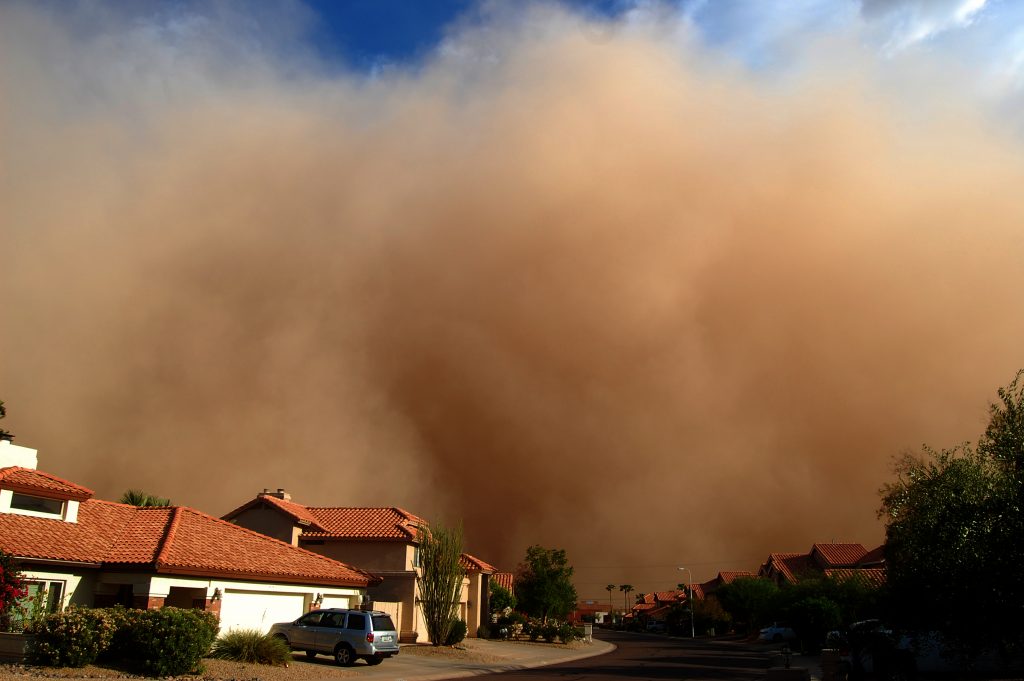
_________________________________________________________________
"Carbon Dioxide Set an All-Time Monthly High"
"With May in the books, it’s official: carbon dioxide set an all-time monthly record. It’s a sobering annual reminder that humans are pushing the climate into a state unseen in millions of years. Carbon dioxide peaked at 409.65 parts per million for the year, according to data from the National Oceanic and Atmospheric Administration. It’s not a surprise that it happened. Carbon dioxide levels at Mauna Loa Observatory in Hawaii peak in May every year."
See more from Climate Central HERE:
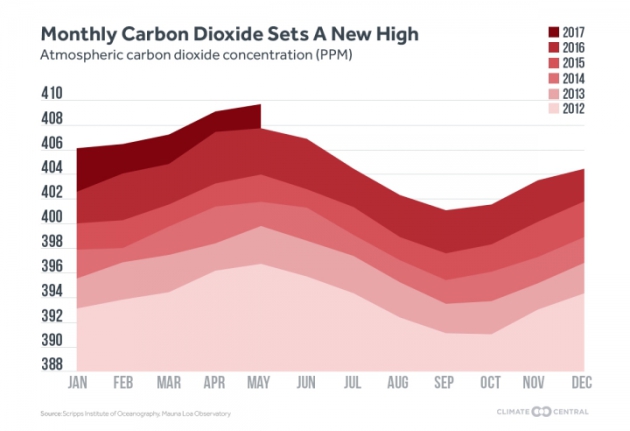 _____________________________________________________________
Chilly Weather in the Northeast
_____________________________________________________________
Chilly Weather in the Northeast
After a VERY chilly day in the Northeast on Tuesday with temperatures running nearly 20F to 25F below average, temperatures on Wednesday won't be quite as chilly, but it will still be well below average for early June. Take a look at highs on Wednesday below, note that many locations from Cincinnati to Buffalo to Boston, New York and Philadelphia will still be running nearly 10F to 20F below average!
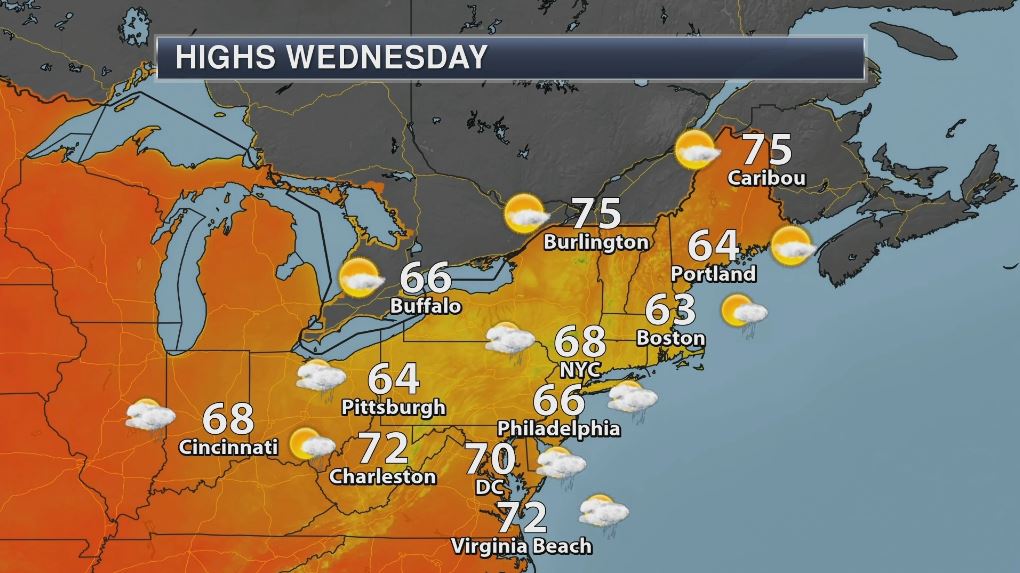
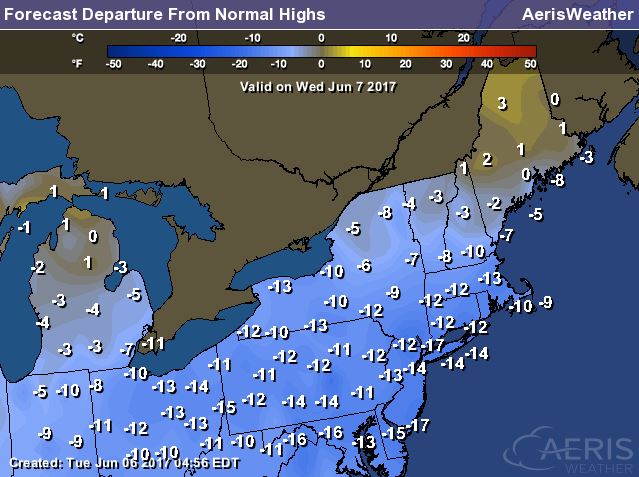
Warmer Outlook Ahead in the Northeast!
According to NOAA's CPC, the 6 to 10 day temperature outlook, which takes us into the middle part of the month, temperatures will return to above average and summer like levels! In fact, the extended forecast for New York City, NY suggests that temperatures by the weekend and early next week could approach 90F or warmer!! Fear not, summer is on it's way!
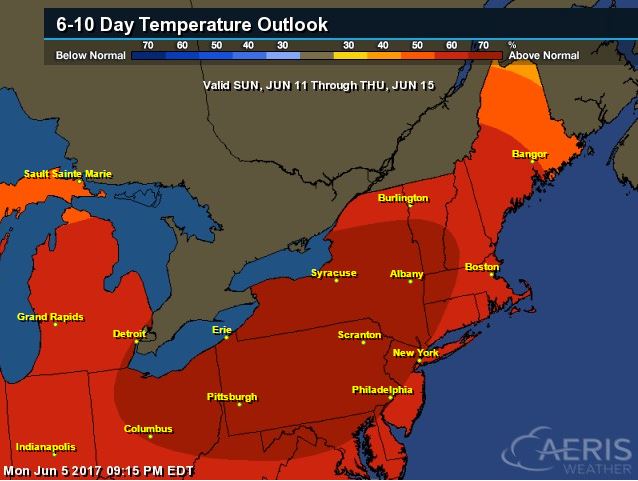
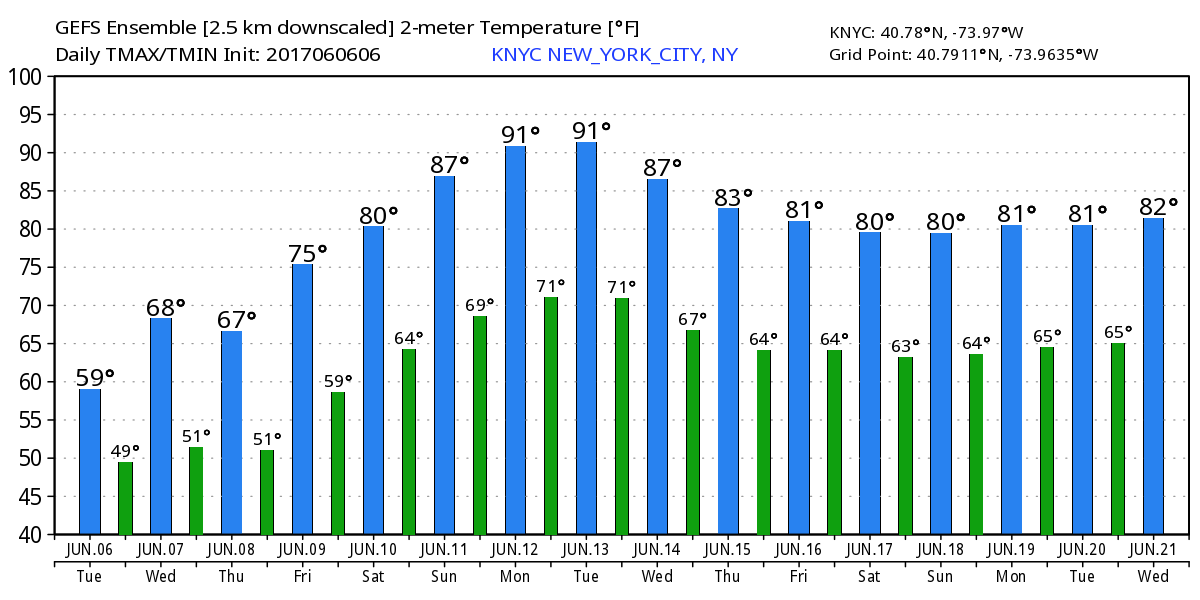
_______________________________________________________________
See more from Climate Central HERE:

After a VERY chilly day in the Northeast on Tuesday with temperatures running nearly 20F to 25F below average, temperatures on Wednesday won't be quite as chilly, but it will still be well below average for early June. Take a look at highs on Wednesday below, note that many locations from Cincinnati to Buffalo to Boston, New York and Philadelphia will still be running nearly 10F to 20F below average!
Warmer Outlook Ahead in the Northeast!
According to NOAA's CPC, the 6 to 10 day temperature outlook, which takes us into the middle part of the month, temperatures will return to above average and summer like levels! In fact, the extended forecast for New York City, NY suggests that temperatures by the weekend and early next week could approach 90F or warmer!! Fear not, summer is on it's way!

_______________________________________________________________
Weather Outlook
A storm system in the Southeastern US will continue to kick out scattered showers and storms across parts of Florida and the Mid-Atlantic states through Thursday before heavy rains and spotty strong storms fade. Meanwhile, a new storm system will move into the Western US with scattered rain showers and perhaps even a few mountain snow showers through early next week.
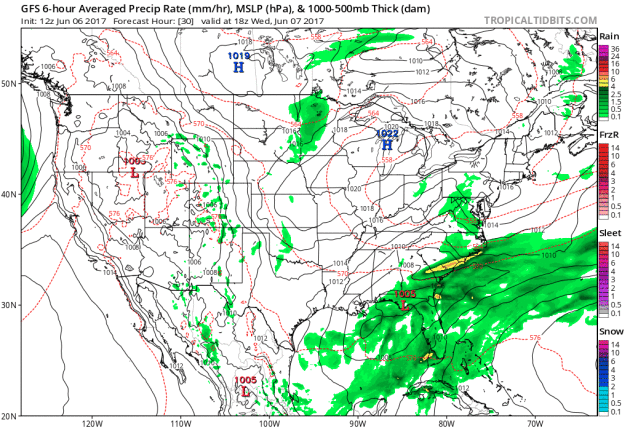
Soaking Rains in the Southeast
Widely scattered showers and thunderstorms will continues across parts of the Southeastern US through late Thursday with areas of locally heavy rain and a few isolated strong storms.
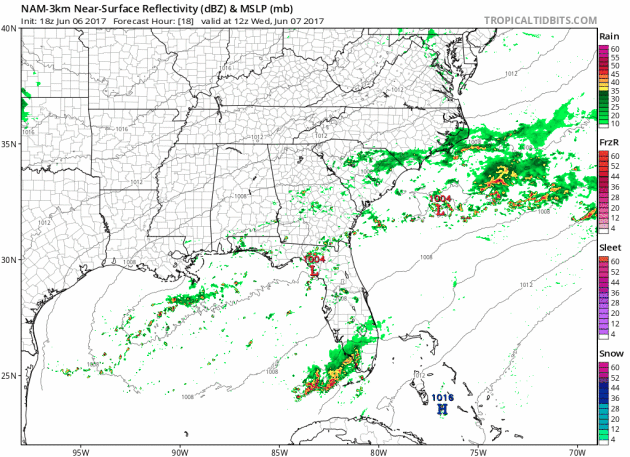
Rainfall Potential Through AM Friday
The rainfall potential across through Southeast looks fairly impressive through Friday morning. Several locations could see 1" to 2" while a few locations across Florida could see up to 3" to 5" by the end of the week, which would really help to dent drought conditions there!
Drought in the Southeast
According to the US Drought Monitor, parts of Florida are still in an Extreme Drought. There has a little improvement since last week, but the more noticeable improvement has been since the beginning of the year, when nearly 21% of the Southeast was considered in an Extreme Drought and nearly 9% was in Exceptional Drought.
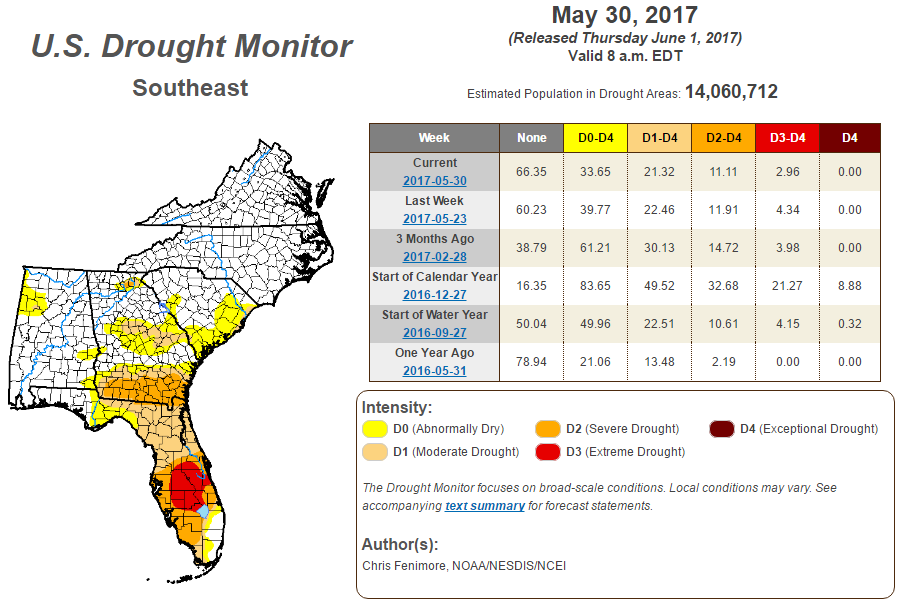
Precipitation Needed to End Drought
Here's a look at how much rainfall is needed to end the drought in the Southeast. Note that some locations across central and southern Florida will need nearly a foot of rain to end the very dry conditions there.
_________________________________________________________________
PRELIMINARY 2017 Tornado Count
According to NOAA's SPC, the PRELIMINARY 2017 tornado count is 952 (through June 5). Note that is the most active year for tornadoes since 2011, when there were nearly 1,400 tornadoes. Keep in mind there was a major tornado outbreak in the Gulf Coast region from April 25-28, 2011 that spawned nearly 500 tornadoes, some of which were deadly. That outbreak is known as the Super Outbreak of 2011 and has gone down in history as one of the biggest, costliest and one of the deadliest tornado outbreaks in history.
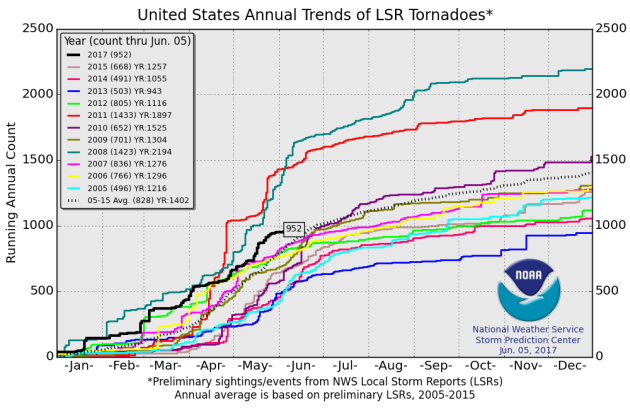 According to NOAA's NCDC, June is the 2nd busiest month for tornadoes behind May across the country, averaging 243! Note that most of these tornadoes occur across the Plains from Texas to Nebraska, which is also in a region known as "Tornado Alley". As it stands now, May was the busiest tornado month of the year thus far with a preliminary total of 278.
According to NOAA's NCDC, June is the 2nd busiest month for tornadoes behind May across the country, averaging 243! Note that most of these tornadoes occur across the Plains from Texas to Nebraska, which is also in a region known as "Tornado Alley". As it stands now, May was the busiest tornado month of the year thus far with a preliminary total of 278.
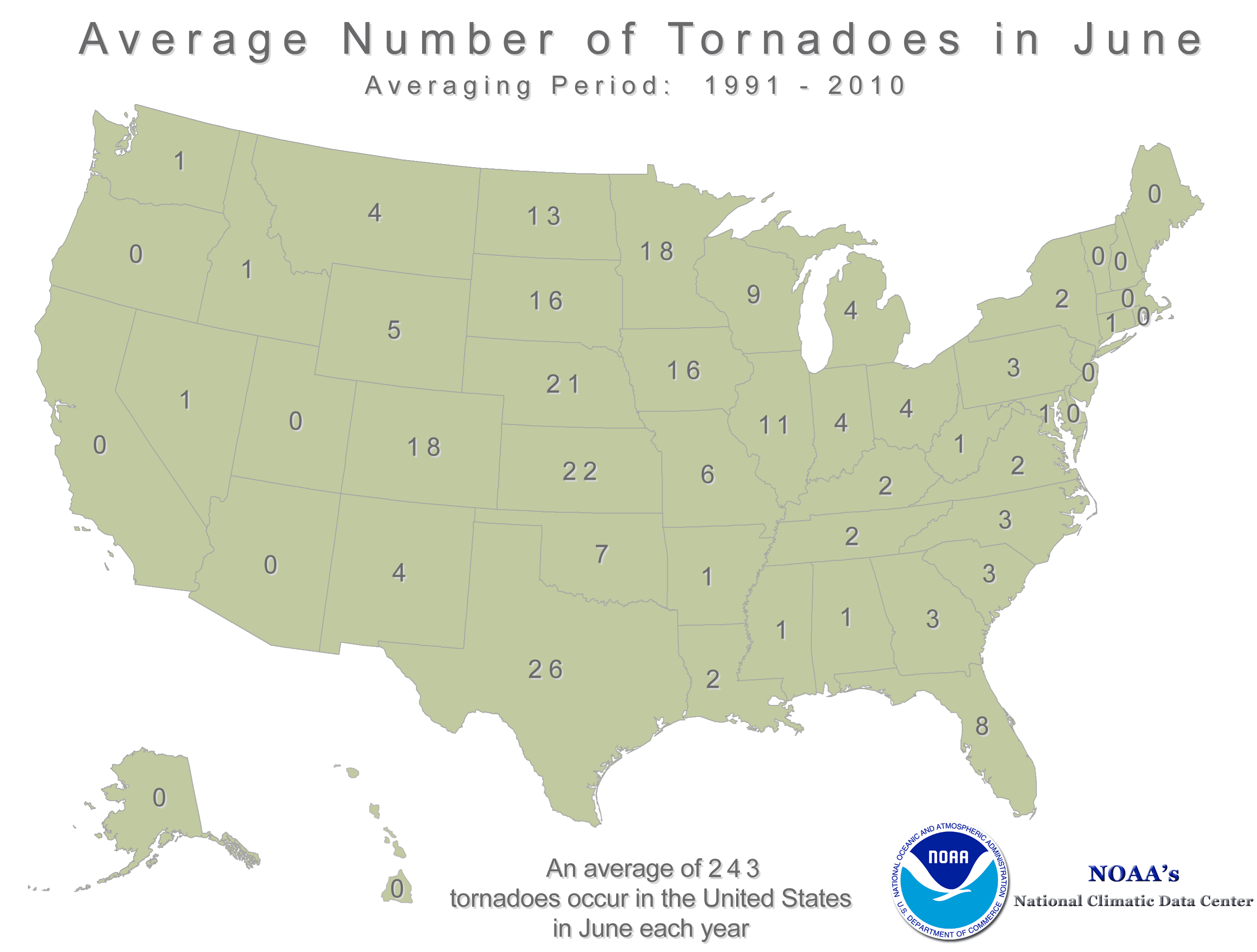
___________________________________________________________________
Minnesota Tornadoes in 2016
While June is typically the busiest month of the year for tornadoes in the state of Minnesota (averaging 18), there were only 13 tornadoes in June last year. However, there were nearly 200 severe weather reports.
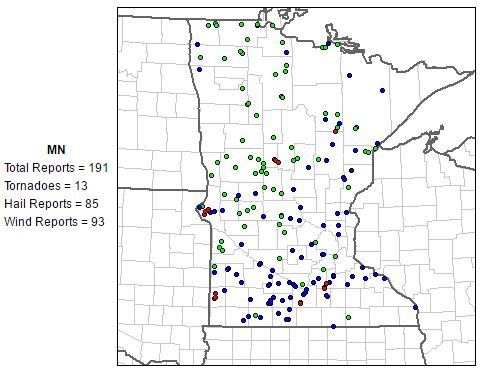
Severe Weather Reports in 2010
The last time June had an above average tornado month was in 2010 when there were nearly 100 tornadoes reported. On June 17th, there were three EF-4 tornadoes and four EF-3 tornadoes, 3 of which were deadly!
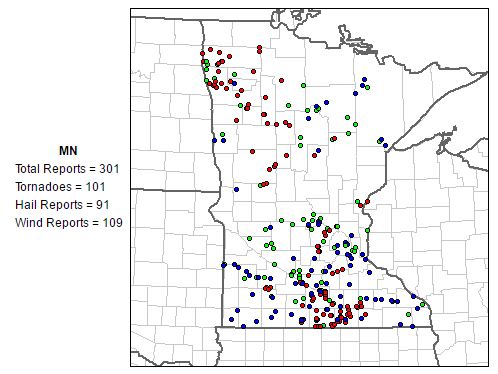
________________________________________________________________________
Spotty Midweek Rumbles. 90s Looming For The Weekend
By Todd Nelson, filling in for Douglas
According to the National Weather Service our 3 consecutive 90 degrees days that we had on June 2nd, 3rd, and 4th in the Twin Cities was quite rare! In fact, since 1871, there have only been 7 other occurrences before June 5th. The most was 6 days set on May 28 to June 2 in 1934. Pretty interesting.
Hope you've been enjoying the slightly cooler air as of late. It appears that we may be gearing up for another round of stinkin' hot & humid weather again this weekend! Weather models are suggesting that both Saturday and Sunday could feature highs around 90 degrees with dewpoints in the mid to upper 60s. Whew!
Note that the annual average is a little more than 10 days with highs at or above 90 degrees in the Twin Cities, so we could easily have nearly half of that before mid June!
A sluggish storm system slides through later today, which could help to puff up a few late day rumbles. I'm not very impressed by our rain chances, but hopefully a little more sizable storm brings us much needed rain early next week.
It's getting dry, fast!
_______________________________________________________

Average Tornadoes in June

___________________________________________________________________
Minnesota Tornadoes in 2016
While June is typically the busiest month of the year for tornadoes in the state of Minnesota (averaging 18), there were only 13 tornadoes in June last year. However, there were nearly 200 severe weather reports.
Severe Weather Reports in 2010
The last time June had an above average tornado month was in 2010 when there were nearly 100 tornadoes reported. On June 17th, there were three EF-4 tornadoes and four EF-3 tornadoes, 3 of which were deadly!
________________________________________________________________________
Spotty Midweek Rumbles. 90s Looming For The Weekend
By Todd Nelson, filling in for Douglas
According to the National Weather Service our 3 consecutive 90 degrees days that we had on June 2nd, 3rd, and 4th in the Twin Cities was quite rare! In fact, since 1871, there have only been 7 other occurrences before June 5th. The most was 6 days set on May 28 to June 2 in 1934. Pretty interesting.
Hope you've been enjoying the slightly cooler air as of late. It appears that we may be gearing up for another round of stinkin' hot & humid weather again this weekend! Weather models are suggesting that both Saturday and Sunday could feature highs around 90 degrees with dewpoints in the mid to upper 60s. Whew!
Note that the annual average is a little more than 10 days with highs at or above 90 degrees in the Twin Cities, so we could easily have nearly half of that before mid June!
A sluggish storm system slides through later today, which could help to puff up a few late day rumbles. I'm not very impressed by our rain chances, but hopefully a little more sizable storm brings us much needed rain early next week.
It's getting dry, fast!
_______________________________________________________
Extended Forecast
WEDNESDAY: Summery. Spotty late day rumbles. Winds: S 5-10. High: 82.
WEDNESDAY NIGHT: More clouds. Slight chance of a passing thundershower. Winds: S 5. Low: 62
THURSDAY: Chance of a lingering thundershower. Winds: NNW 5-10 High: 81.
FRIDAY: Nice day. Skip out of work early. Winds: ESE 5-10. Wake-up: 59. High: 81.
SATURDAY: Hot & sticky. Gusty winds. Storms N. Winds: SSW 15-25. Wake-up: 60. High: 90.
SUNDAY: Hotter & Stickier. Storms overnight. Winds: SSW 15-25. Wake-up: 70. High: 90.
MONDAY: Risk of a strong storm & downpours. Winds: SSW 10-20. Wake-up: 70. High: 83.
TUESDAY: AM Shower. PM clearing & cooler. Winds: NNW 5-15. Wake-up: 65. High: 78.
_______________________________________________________
_______________________________________________________
This Day in Weather History
June 7th
June 7th
2011: The Twin Cities reach a high of 103 degrees, shattering the previous record high by 8 degrees.
1939: Grapefruit-sized hail falls in Rock County, killing hundreds of farm animals near Hills.
________________________________________________________
________________________________________________________
Average High/Low for Minneapolis
June 7th
June 7th
Average High: 76F (Record: 103F set in 2011)
Average Low: 56F (Record: 35F set in 1998)
Average Low: 56F (Record: 35F set in 1998)
Record Rainfall: 2.91" set in 1984
_________________________________________________________
_________________________________________________________
Sunrise/Sunset Times for Minneapolis
June 7th
June 7th
Sunrise: 5:27am
Sunset: 8:57pm
Sunset: 8:57pm
Hours of Daylight: 15hours & 30mins
Daylight gained since yesterday: ~1min
Daylight gained since winter solstice (December 21st): ~6hours & 41mins
Additional Daylight Gained By Summer Solstice (June 20th): ~ 7mins
__________________________________________________________
Daylight gained since winter solstice (December 21st): ~6hours & 41mins
Additional Daylight Gained By Summer Solstice (June 20th): ~ 7mins
__________________________________________________________
Moon Phase for June 6th at Midnight
2.3 Days Before Full "Strawberry" Moon
2.3 Days Before Full "Strawberry" Moon
"June 9, 9:10 a.m. EDT – Full Strawberry Moon. Strawberry picking season peaks during this month. Europeans called this the Rose Moon. Since the moon arrives at apogee about 15 hours earlier, this will also be the smallest full moon of 2017. In terms of apparent size, it will appear 12.2 percent smaller than the full moon of Dec. 3."
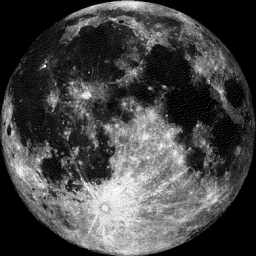
_____________________________________________________________
Weather Outlook for Wednesday
Winds will be fairly light across the region once again Wednesday, but could gust up to 10mph-15mph during the afternoon as a weak storm system approaches from the west. This front will also bring us a chance of a few spotty showers/storms late in the day Wednesday.
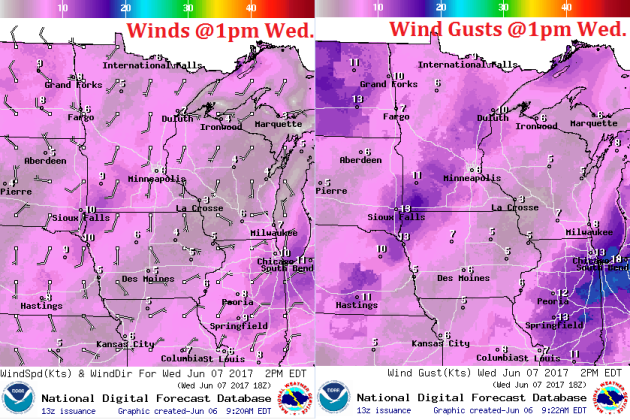
Wednesday will start on a fairly sunny note, but a weak front approaching front from the west will bring a chance of a few spotty showers and storms into the region later in the afternoon/evening. Some of these spotty storms could linger into Thursday, but the don't appear to be very widespread and certainly won't produce much heavy rainfall potential.
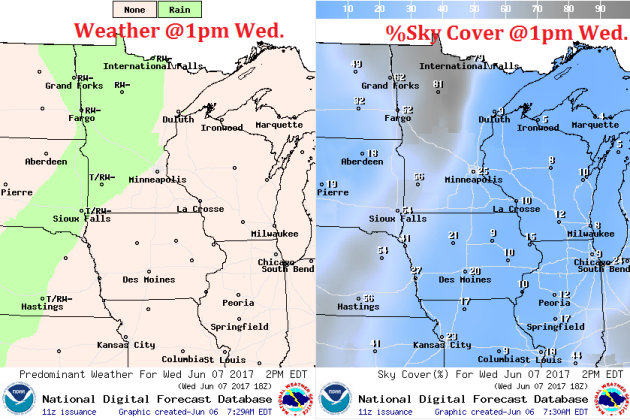
Warm Sunny Thursday, Then Warm & Muggy With Storms
Here's the weather outlook from Wednesday to late Thursday night which shows our next weak storm system moving through the Upper Midwest with a few spotty showers and storms.
.gif)
Extended Rainfall Forecast
Here's the extended rainfall forecast through Friday . Scattered showers and storms will produce heavier rainfall across the Eastern Dakotas and across Northwestern Minnesota, but much of Central MN, including the Twin Cities could be left high and dry as the front sneaks through.
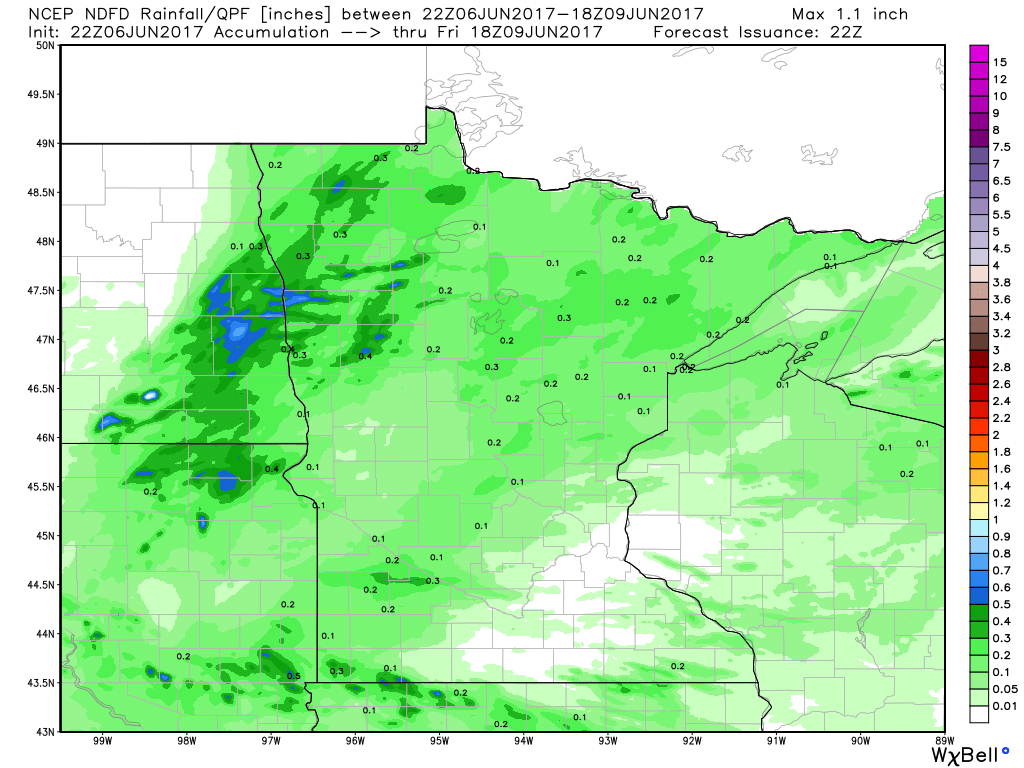
_________________________________________________________________
Increasing Dewpoints by the Weekend
Here's a look at dewpoints on Wednesday vs Saturday across the region. Note that dewpoints on Wednesday will be in the 50s and a little higher than they were on Tuesday, but will still be considered comfortable. However, by Saturday, our dewpoints will will be in the lower 60s, which will be noticeable. With highs approaching 90F and dewpoints in the 60s both Saturday and Sunday, this weekend will feel very summer like.
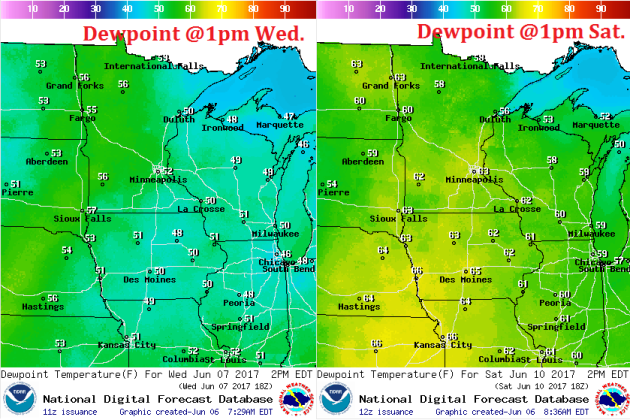
________________________________________________________________________
Weather Outlook For Wednesday
Wednesday will be another mild day across the region with highs in the upper 70s and lower 80s. Note that much of the day will be sunny and dry, but there could be a few late day showers and storms across far western Minnesota.
UV Index for Wednesday - HIGH
The UV Index will be considered HIGH across much of the state of Minnesota on Wednesday, which means that it will only 15 to 20 minutes or less to burn unprotected skin. With that said, if you are planning on spending any extended length of time outside, make sure you wear appropriate attire and lather on the sun block!
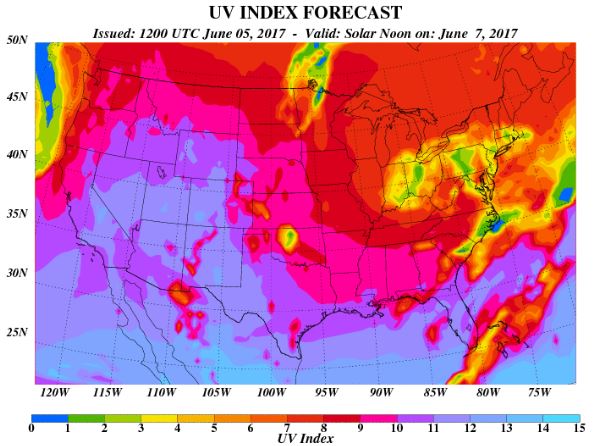
_____________________________________________________________
_____________________________________________________________
Weather Outlook for Thursday
There maybe a few lingering T-showers across the region on Thursday, but temperatures will have no problem rebounding back into the upper 70s and low 80s, which will be slightly above average for early June. The cool spot will still be found in far northeastern Minnesota, where 60s will be likely in Grand Marais. Thanks to Lake Superior, free air conditioning will be found along the North Shore.
UV Index for Thursday - HIGH
The UV Index will be considered HIGH across much of the state of Minnesota on Thursday, which means that it will only 15 to 20 minutes or less to burn unprotected skin. With that said, if you are planning on spending any extended length of time outside, make sure you wear appropriate attire and lather on the sun block!

_____________________________________________________________________________
_____________________________________________________________________________
Temperature Outlook
Here's the temperature outlook from 2 different models through the the 3rd weekend of June. Note that the ECMWF keeps highs around 90 this weekend, while GEFS brings highs in the low to mid 90s through Monday. Stay tuned for more!
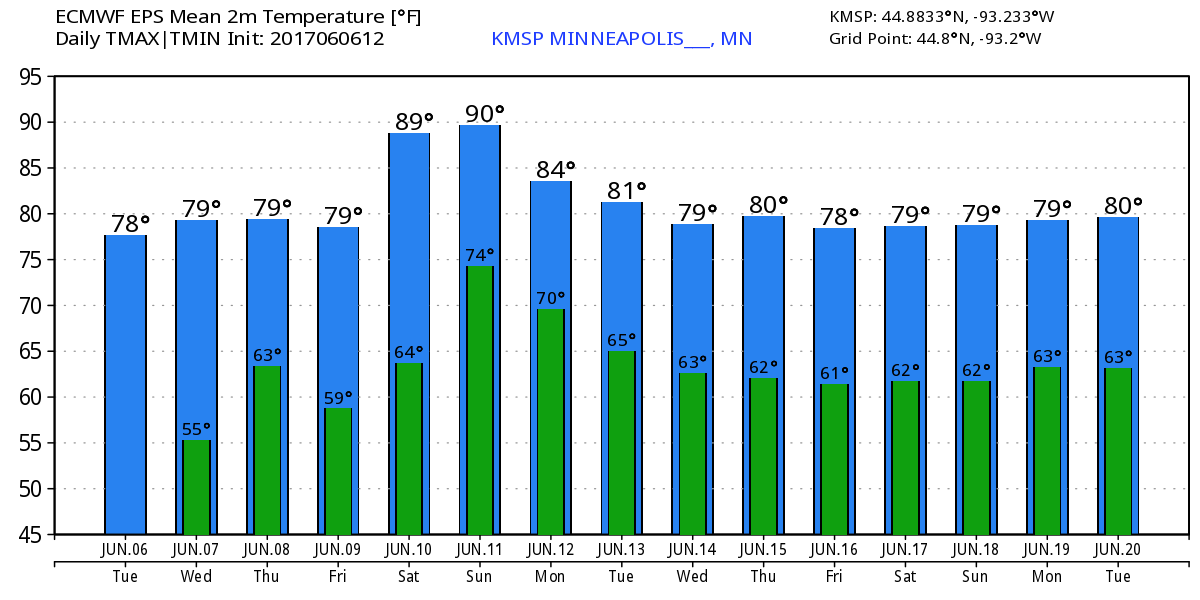
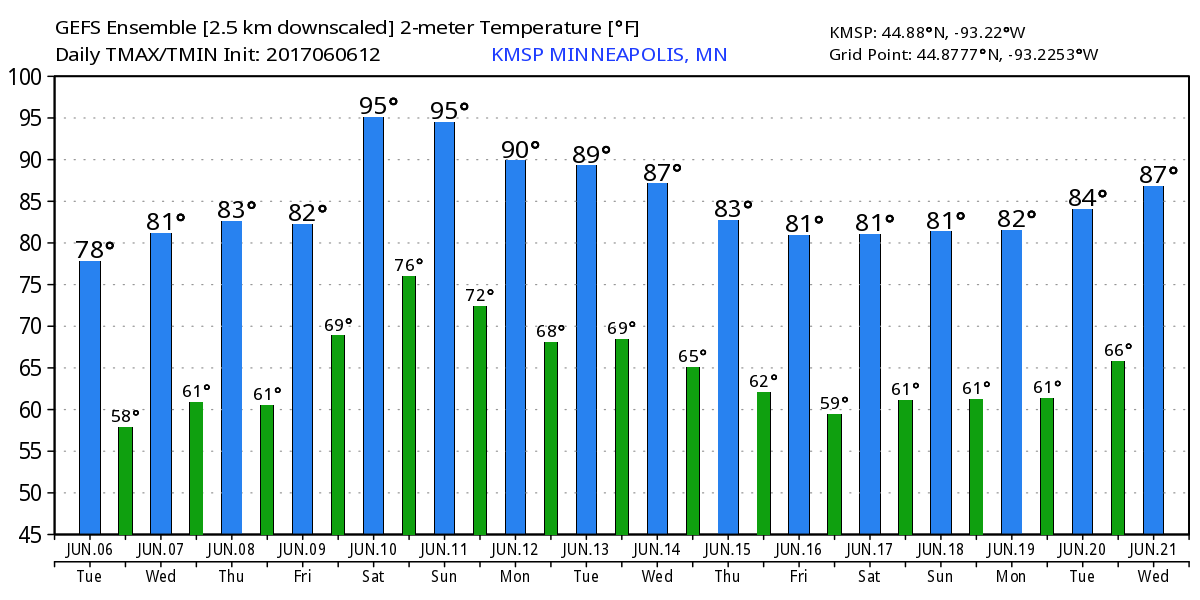
8 to 14 Day Temperature Outlook
According to NOAA's CPC, the extended temperature outlook through June 15th suggests warmer than average temperatures moving in across the Upper Midwest and Great Lakes Region.
___________________________________________________________
Extended Temperature Outlook
According to NOAA's CPC, the extended temperature outlook through June 15th shows warmer than average temperatures settling in across the Eastern two-thirds of the nation, while the Western third of the nation will be cooler.
Temperature Trend
Here's the temperature trend through the middle part of next week. Cooler air looks to continue in the Eastern US through the weekend. Meanwhile, a big blob of warmer than average weather develops in the Western US and pushes into the Central and Eastern US by the weekend and next week.
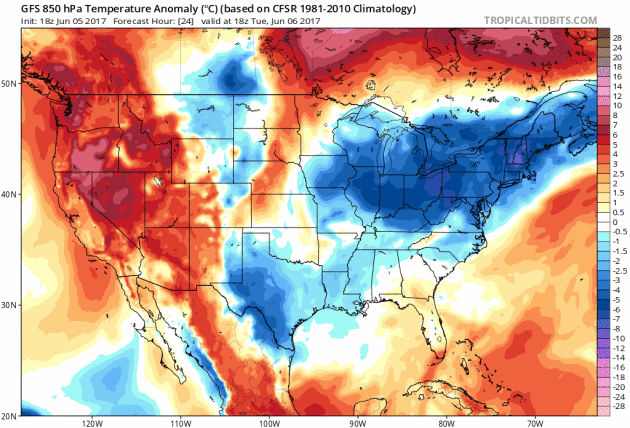
Heavy rain will continue across the Southeastern US with spotty severe weather concerns through midweek. There will also be spotty thunderstorms and could be strong to severe along the Front Range of the Rockies.
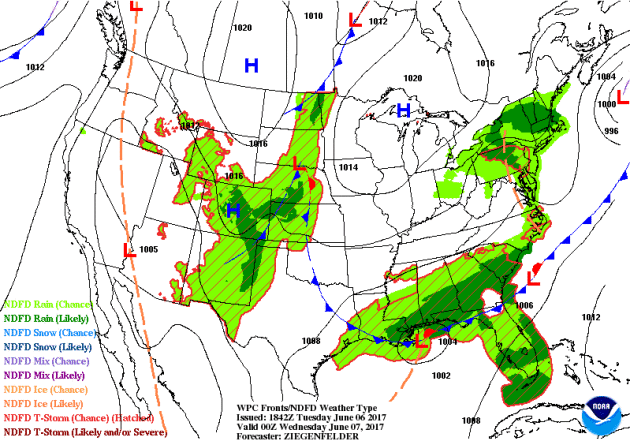
5 Day Precipitation Outlook
According to NOAA's WPC, the next several days could produce areas of locally heavy rainfall in the Eastern half of the country and especially across the Southeastern US where some 3" to 6" maybe possible. Another area of heavy rainfall could be found across the Pacific Northwest, while the Desert Southwest looks to remain very dry.
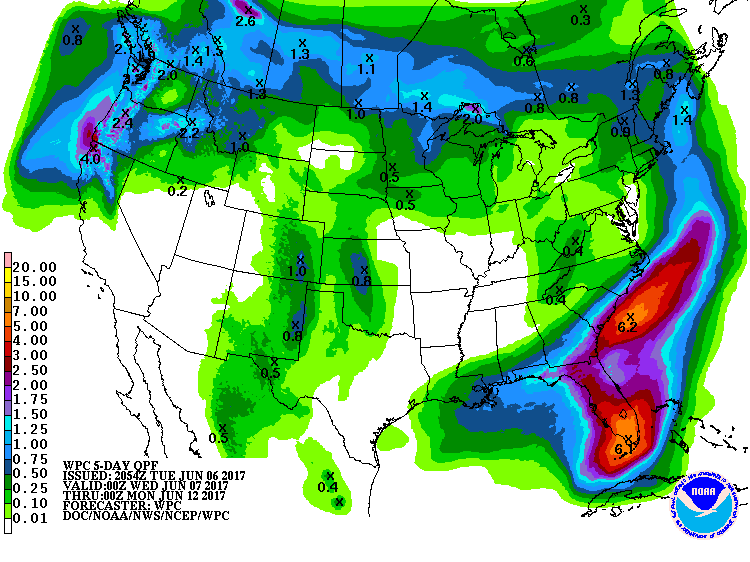 ____________________________________________________________________
____________________________________________________________________
"Northern Lights from Space! Astronaut Captures Aurora Over Europe"
"The enchanting blue and green lights of an aurora dance above the city lights of Northern Europe in a stunning new image taken by an astronaut in space. In between mission tasks and scientific experiments aboard the International Space Station (ISS), French astronaut Thomas Pesquet has captured some amazing images from the orbiting outpost. In a recently shared snapshot by Pesquet, the aurora borealis can be seen in the top right corner of the frame, with the sparkling lights of Northern Europe's cities in the foreground."
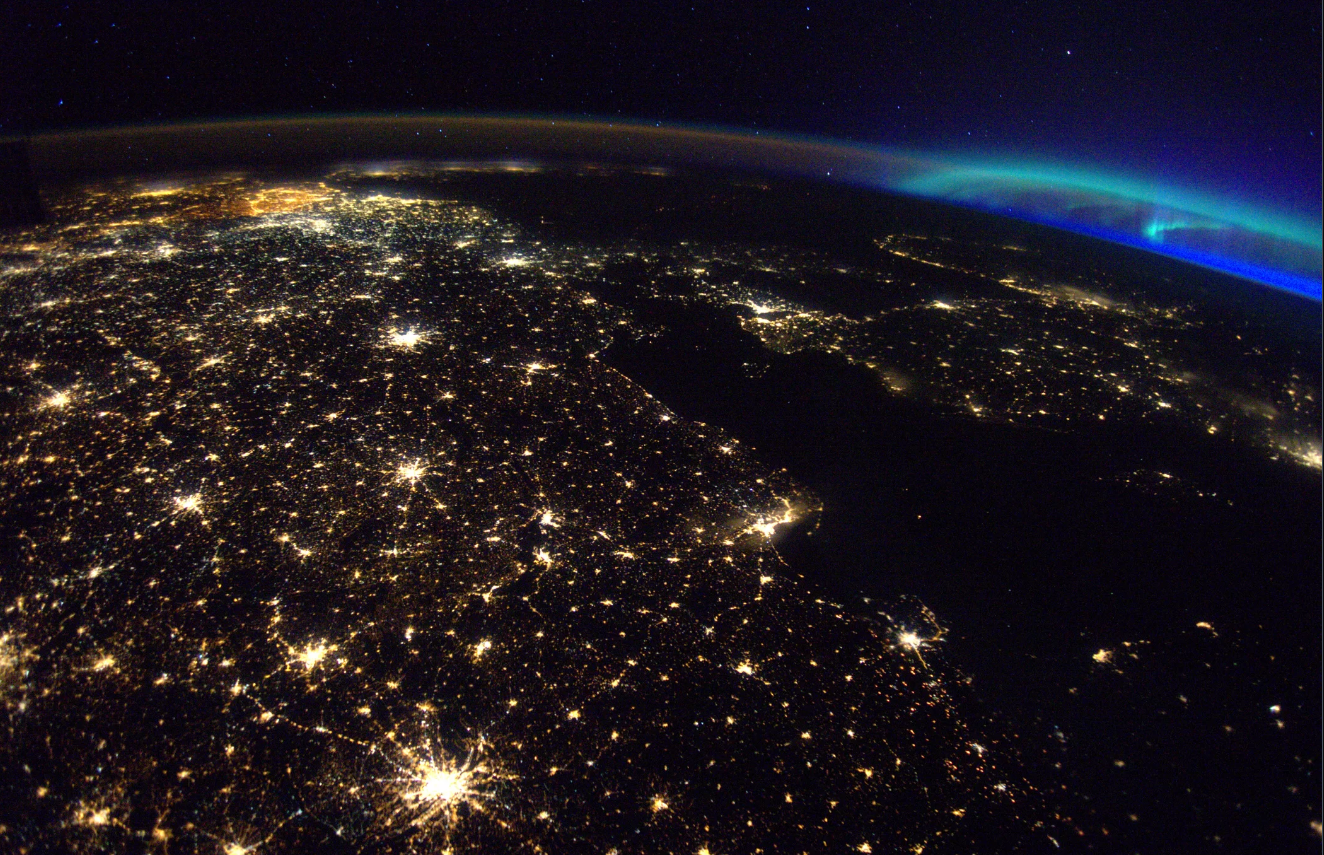
______________________________________________________________________
"Report: National Weather Service meteorologists ‘fatigued’ and ‘demoralized’ by understaffing"
The employees of the National Weather Service are demoralized, according to a recent report by the Government Accountability Office. They are understaffed and spread thin, covering shifts and positions beyond what they were hired to fill. The weather never sleeps, and apparently neither does the Weather Service. Between 2014 and 2016, the number of vacant staff meteorologist positions increased 57 percent. In the same time, management vacancies decreased by 29 percent. The mission of the Weather Service — to protect lives and property — is critical, so the employees are completing the tasks. But it comes at a cost. The GAO used some pretty gloomy language to describe the employees’ current state of mind (emphasis mine):
1.) “. . . operational unit managers and staff experienced stress, fatigue, and reduced morale resulting from their efforts to cover for vacancies.”
2.) “. . . but the long-term result has been that employees are fatigued and morale is low.”
3.) “. . . staff are getting worn down covering extra forecasting shifts.”
4.) “One operational unit manager we interviewed said staff in his unit were demoralized because they had continued to cover the workload for multiple vacancies.”
5.) “. . . staff are concerned that the agency may be intentionally leaving vacant positions open to downsize.”
6.) “NWS headquarters officials acknowledged that vacancies had created challenges and stress …”
See more from WashingtonPost HERE:

______________________________________________________________________________"NOAA forecasts busy hurricane season for Atlantic"
"Less than a year after Hurricane Matthew raked the East Coast, killing 34 people and causing $10 billion in damage in the U.S. alone, coastal areas are once again preparing for the onset of the Atlantic hurricane season. This year, forecasters with the National Oceanic and Atmospheric Administration are expecting to see above-average storm numbers in the Atlantic, despite the uncertainty of whether an El Niño will develop over the summer. The forecast is currently for 11 to 17 named storms to form, of which five to nine are expected to become hurricanes, and two to four major hurricanes. The forecast, though, “does not predict when, where, and how these storms might hit,” Ben Friedman, the acting NOAA administrator said during a press conference, as he and other officials urged coastal residents to begin their preparations."
See more from Salon.com Via Climate Central HERE:
(Image credit: AP Photo/Stephen B. Morton via Salon.com & Climate Central)
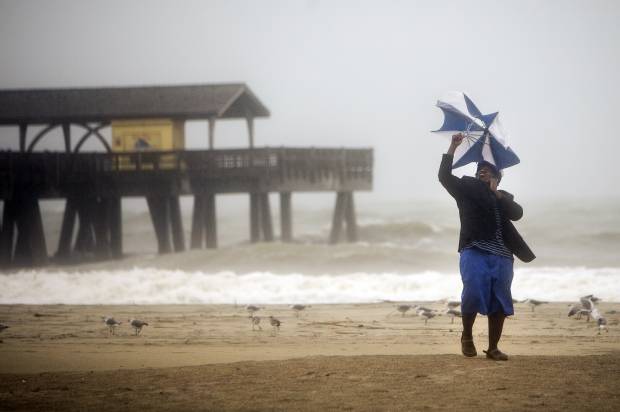
________________________________________________________________________"As hurricane season begins, NOAA told to slow its transition to better models"
"NOAA could become a second- or third-tier weather forecasting enterprise... It's a lousy time to be a US weather forecaster. Even as the Atlantic Ocean heats up, wind shear falls, and the potential for an active hurricane season looms, vacancies have been mounting at the National Hurricane Center in Miami and at National Weather Service offices around the country. According to a new US Government Accountability Office report, morale has sunk among forecasters, and increasing vacancies have led to an inability to provide timely severe weather information to state and local emergency managers. Instead of addressing this problem, the proposed budget released by the Trump administration late last month would exacerbate the tempest. Overall, the President's budget for the National Oceanic and Atmospheric Administration sought $1.06 billion for the National Weather Service, down six percent from 2017. But the devil is in the details, and some of these details are indeed devilish."
See more from Arstechnica HERE:
(Image Credit: NOAA - Hurricane Matthew is seen in 2016, closing in on Florida)
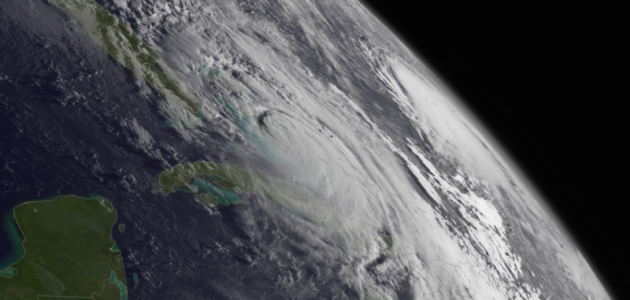
__________________________________________________________________________
2.) “. . . but the long-term result has been that employees are fatigued and morale is low.”
3.) “. . . staff are getting worn down covering extra forecasting shifts.”
4.) “One operational unit manager we interviewed said staff in his unit were demoralized because they had continued to cover the workload for multiple vacancies.”
5.) “. . . staff are concerned that the agency may be intentionally leaving vacant positions open to downsize.”
6.) “NWS headquarters officials acknowledged that vacancies had created challenges and stress …”
See more from WashingtonPost HERE:

______________________________________________________________________________"NOAA forecasts busy hurricane season for Atlantic"
"Less than a year after Hurricane Matthew raked the East Coast, killing 34 people and causing $10 billion in damage in the U.S. alone, coastal areas are once again preparing for the onset of the Atlantic hurricane season. This year, forecasters with the National Oceanic and Atmospheric Administration are expecting to see above-average storm numbers in the Atlantic, despite the uncertainty of whether an El Niño will develop over the summer. The forecast is currently for 11 to 17 named storms to form, of which five to nine are expected to become hurricanes, and two to four major hurricanes. The forecast, though, “does not predict when, where, and how these storms might hit,” Ben Friedman, the acting NOAA administrator said during a press conference, as he and other officials urged coastal residents to begin their preparations."
See more from Salon.com Via Climate Central HERE:
(Image credit: AP Photo/Stephen B. Morton via Salon.com & Climate Central)

________________________________________________________________________"As hurricane season begins, NOAA told to slow its transition to better models"
"NOAA could become a second- or third-tier weather forecasting enterprise... It's a lousy time to be a US weather forecaster. Even as the Atlantic Ocean heats up, wind shear falls, and the potential for an active hurricane season looms, vacancies have been mounting at the National Hurricane Center in Miami and at National Weather Service offices around the country. According to a new US Government Accountability Office report, morale has sunk among forecasters, and increasing vacancies have led to an inability to provide timely severe weather information to state and local emergency managers. Instead of addressing this problem, the proposed budget released by the Trump administration late last month would exacerbate the tempest. Overall, the President's budget for the National Oceanic and Atmospheric Administration sought $1.06 billion for the National Weather Service, down six percent from 2017. But the devil is in the details, and some of these details are indeed devilish."
See more from Arstechnica HERE:
(Image Credit: NOAA - Hurricane Matthew is seen in 2016, closing in on Florida)

__________________________________________________________________________
"Canada tornado: Alberta lawn-mowing man defies twister"
"A picture of a man in Canada calmly mowing his lawn with a menacing tornado swirling in the background has gone viral on social media. Theunis Wessels was "fully aware" of the twister but "wasn't worried at all", his wife Cecilia, who took the photo, told the BBC. She said the tornado was about 2km (1.25 miles) from their house in Three Hills, Alberta - much further away than it appeared in the photo. The storm was quickly gone, she added. Mrs Wessels told the BBC she was sleeping in the house on Friday - but then was woken by her nine-year-old daughter who was concerned that her father would not abandon his lawn-mowing and hide inside from the tornado."
See more from BBC HERE:
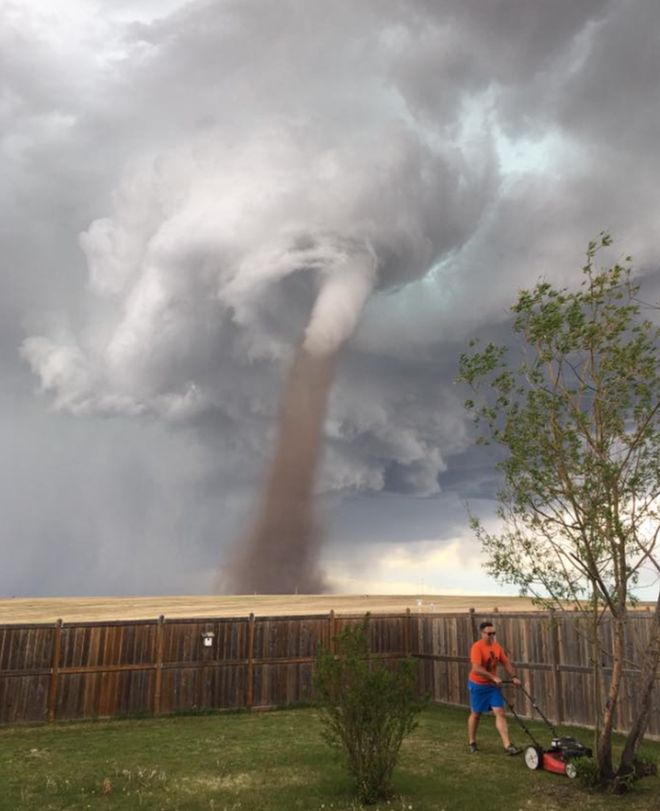
________________________________________________________________________
See more from BBC HERE:

________________________________________________________________________
"This storm in Mexico is probably what the end of the world would look like"
"If I’m imagining an end-of-the-world montage, a la the “Day After Tomorrow,” this storm would definitely make the cut. I had to watch the video three times before I was convinced it wasn’t faked or altered because it’s Just. So. Perfect. (People can do crazy things with editing software these days and I refuse to be labeled gullible.) It’s a supercell thunderstorm, which means it has a rotating updraft. It’s impossible to tell whether this is the end stage of a previously larger tornado or if this was the storm’s main show. This storm could have had a big tornado on the ground for a while and this is just the “rope” stage as the twister dissipates."
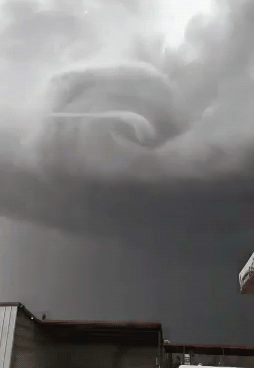
"Fractured Antarctic ice sheet will create the largest iceberg ever recorded"
Due to global warming and rising temperatures, glaciers are slowly melting – and, in some cases, breaking apart. A massive 8-mile crack is steadily growing along Antarctica’s Larsen C Ice Shelf – and when it splits, the resulting iceberg will be around 1,930 square miles (5,000 square kilometers) in size. That’s as big as Delaware – making it quite possibly the largest iceberg ever recorded.
"A crucial crack in an Antarctic ice sheet grew 11 miles in only 6 days"
"The widening rift in the Larsen C ice shelf in West Antarctica has reached a (relative, for ice) fever pitch in the past few months, stretching for more than 110 miles and gaping more than 1,000 feet across. In just the last couple of days, the crack grew another 11 miles and took a sharp right turn toward the sea. It now ends a mere eight miles from totally breaking through, according to observations from ice-monitoring mission Project Midas. The iceberg that forms will be bigger than Long Island. Or as big as Delaware. Or roughly the size of Prince Edward Island, if you’re Canadian."
See more from Grist.org HERE:
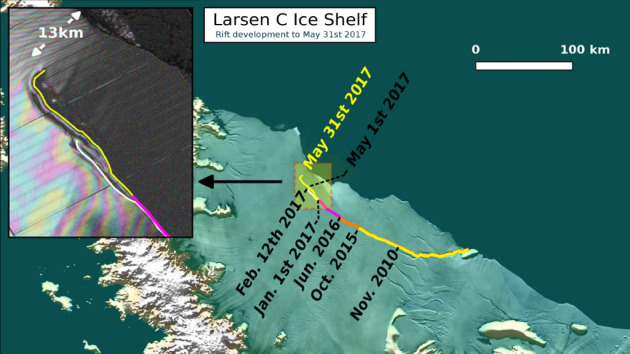
____________________________________________________________________________"6 Dangerous Objects Lurking Near Earth"
Space is a dangerous place for humans. There’s no air, it’s ridiculously cold and things are really far apart, meaning help would be hard to come by in an emergency. But space is also dangerous for things that are much larger, like planets. As Earth innocently swings along its orbit, there are objects lurking out there that could kill our dear blue marble — and all of us on it.
See more from IBTimes.com HERE:
(This artist’s rendering shows a supermassive black hole devouring a star, which leaves behind a stream of light as it descends into its own destruction. Photo: NASA/JPL)
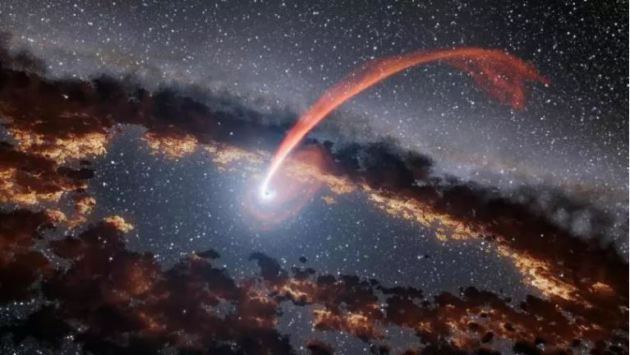
_______________________________________________________________________"In Praise of June Gloom, L.A.'s Most Underappreciated Weather Event"
"People may praise L.A.'s copious supply of sunshine or wax poetic about the Santa Ana Winds, but if there's one weather event in Southern California that is woefully underappreciated, it's June Gloom. It's the calm before the summer swelter, the two or three months of moody and mild weather that precede the scalding months of July, August and September. The May Gray/June Gloom phenomena are seen all over the Pacific Coast, though they're especially pronounced in Southern California (since a foggy day isn't exactly noteworthy in Seattle or San Francisco). Essentially, what happens is that the air starts to warm up in May, but the waters of the Pacific Ocean are still relatively cold. That causes condensation, which creates a marine layer — a thin layer of low-lying clouds over the ocean, which forms overnight and then creeps over the land during the morning. There are a few other factors involved, including something called the Catalina Eddy, where the island redirects upper-level northwesterly air flow onto the Southland."
See more from LAWeekly.com HERE:
(Jacob Avanzato / Flickr via LAWeekly.com)
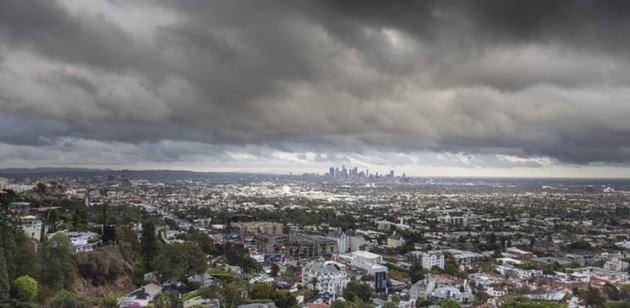
_________________________________________________________________"Scientists study atmospheric waves radiating out of hurricanes"
"Researchers believe they have found a new way to monitor the intensity and location of hurricanes from hundreds of miles away by detecting atmospheric waves radiating from the centers of these powerful storms. In a new study, scientists from the University of Miami (UM) Rosenstiel School of Marine and Atmospheric Science and the Hurricane Research Division of the National Oceanic and Atmospheric Administration (NOAA) presented direct observations of the waves, obtained by NOAA aircraft flying in hurricanes and by a research buoy located in the Pacific Ocean. The waves, known as atmospheric gravity waves, are produced by strong thunderstorms near the eye and radiate outward in expanding spirals. "These very subtle waves can sometimes be seen in satellite images," said David Nolan, professor in the Department of Atmospheric Sciences, and lead author of the study. "We were able to measure them in aircraft data and surface instruments." In addition, says Nolan, computer simulations performed at the UM Center for Computational Science can reproduce the waves, showing that the wave strengths can be related to the maximum wind speed in the core of the storm. These findings suggest that hurricanes and typhoons could be monitored from hundreds of miles away with relatively inexpensive instruments, such as barometers and anemometers, much like earthquakes from around the world are monitored by seismometers."
See more from Phys.org HERE:
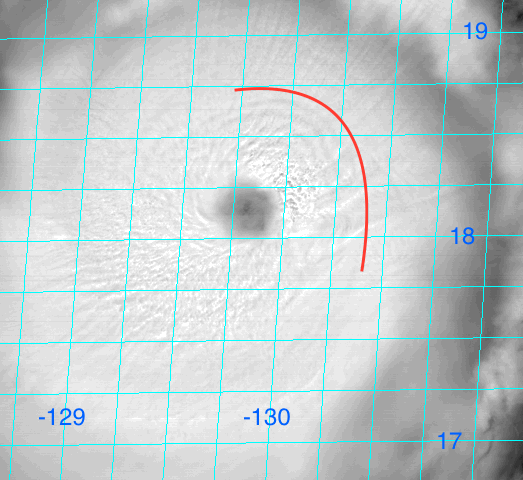
___________________________________________________________"NASA's IceBridge Mission Ends Its 'Best Year Ever'"
"An airplane, a satellite and volumes of data — these are at the core of NASA's 2017 airborne survey of Arctic ice cover, which recently ended. On May 12, the agency's Operation IceBridge conducted its final full science flight over central southern Greenland to track the future orbit of NASA's Ice, Cloud and land Elevation Satellite-2 (ICESat-2), which is scheduled to launch in 2018. One of Operation IceBridge's main goals is to support ICESat-2 and help fill gaps in data collection. However, the airborne missions alone have advanced scientific understanding of Arctic sea and land ice since the program launched nine years ago. [In Images: Greenland's Gorgeous Glaciers] Operation IceBridge has provided valuable data on how climate change is affecting polar ice, according to NASA. Among other things, the flights helped scientists compile the first map to show thawing on the bottom of the massive Greenland Ice Sheet and improved snowfall accumulation models for Greenland, agency officials said in a statement."
See more from Space.com HERE:
(The last Operation IceBridge flight of the 2017 Arctic campaign passed over a fjord in southern Greenland, on May 12, 2017. Credit: John Sonntag/NASA)
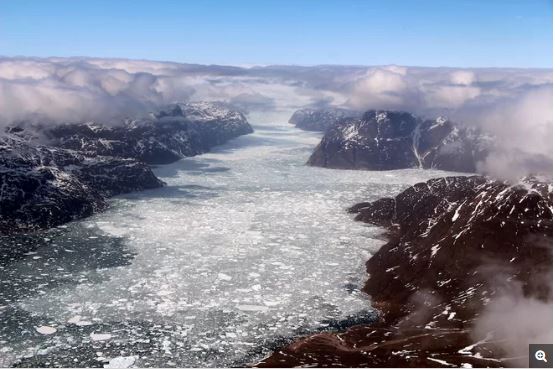 __________________________________________________________________________
__________________________________________________________________________
"The widening rift in the Larsen C ice shelf in West Antarctica has reached a (relative, for ice) fever pitch in the past few months, stretching for more than 110 miles and gaping more than 1,000 feet across. In just the last couple of days, the crack grew another 11 miles and took a sharp right turn toward the sea. It now ends a mere eight miles from totally breaking through, according to observations from ice-monitoring mission Project Midas. The iceberg that forms will be bigger than Long Island. Or as big as Delaware. Or roughly the size of Prince Edward Island, if you’re Canadian."
See more from Grist.org HERE:

____________________________________________________________________________"6 Dangerous Objects Lurking Near Earth"
Space is a dangerous place for humans. There’s no air, it’s ridiculously cold and things are really far apart, meaning help would be hard to come by in an emergency. But space is also dangerous for things that are much larger, like planets. As Earth innocently swings along its orbit, there are objects lurking out there that could kill our dear blue marble — and all of us on it.
See more from IBTimes.com HERE:
(This artist’s rendering shows a supermassive black hole devouring a star, which leaves behind a stream of light as it descends into its own destruction. Photo: NASA/JPL)

_______________________________________________________________________"In Praise of June Gloom, L.A.'s Most Underappreciated Weather Event"
"People may praise L.A.'s copious supply of sunshine or wax poetic about the Santa Ana Winds, but if there's one weather event in Southern California that is woefully underappreciated, it's June Gloom. It's the calm before the summer swelter, the two or three months of moody and mild weather that precede the scalding months of July, August and September. The May Gray/June Gloom phenomena are seen all over the Pacific Coast, though they're especially pronounced in Southern California (since a foggy day isn't exactly noteworthy in Seattle or San Francisco). Essentially, what happens is that the air starts to warm up in May, but the waters of the Pacific Ocean are still relatively cold. That causes condensation, which creates a marine layer — a thin layer of low-lying clouds over the ocean, which forms overnight and then creeps over the land during the morning. There are a few other factors involved, including something called the Catalina Eddy, where the island redirects upper-level northwesterly air flow onto the Southland."
See more from LAWeekly.com HERE:
(Jacob Avanzato / Flickr via LAWeekly.com)

_________________________________________________________________"Scientists study atmospheric waves radiating out of hurricanes"
"Researchers believe they have found a new way to monitor the intensity and location of hurricanes from hundreds of miles away by detecting atmospheric waves radiating from the centers of these powerful storms. In a new study, scientists from the University of Miami (UM) Rosenstiel School of Marine and Atmospheric Science and the Hurricane Research Division of the National Oceanic and Atmospheric Administration (NOAA) presented direct observations of the waves, obtained by NOAA aircraft flying in hurricanes and by a research buoy located in the Pacific Ocean. The waves, known as atmospheric gravity waves, are produced by strong thunderstorms near the eye and radiate outward in expanding spirals. "These very subtle waves can sometimes be seen in satellite images," said David Nolan, professor in the Department of Atmospheric Sciences, and lead author of the study. "We were able to measure them in aircraft data and surface instruments." In addition, says Nolan, computer simulations performed at the UM Center for Computational Science can reproduce the waves, showing that the wave strengths can be related to the maximum wind speed in the core of the storm. These findings suggest that hurricanes and typhoons could be monitored from hundreds of miles away with relatively inexpensive instruments, such as barometers and anemometers, much like earthquakes from around the world are monitored by seismometers."
See more from Phys.org HERE:

___________________________________________________________"NASA's IceBridge Mission Ends Its 'Best Year Ever'"
"An airplane, a satellite and volumes of data — these are at the core of NASA's 2017 airborne survey of Arctic ice cover, which recently ended. On May 12, the agency's Operation IceBridge conducted its final full science flight over central southern Greenland to track the future orbit of NASA's Ice, Cloud and land Elevation Satellite-2 (ICESat-2), which is scheduled to launch in 2018. One of Operation IceBridge's main goals is to support ICESat-2 and help fill gaps in data collection. However, the airborne missions alone have advanced scientific understanding of Arctic sea and land ice since the program launched nine years ago. [In Images: Greenland's Gorgeous Glaciers] Operation IceBridge has provided valuable data on how climate change is affecting polar ice, according to NASA. Among other things, the flights helped scientists compile the first map to show thawing on the bottom of the massive Greenland Ice Sheet and improved snowfall accumulation models for Greenland, agency officials said in a statement."
See more from Space.com HERE:
(The last Operation IceBridge flight of the 2017 Arctic campaign passed over a fjord in southern Greenland, on May 12, 2017. Credit: John Sonntag/NASA)
Thanks for checking in and don't forget to follow me on Twitter @TNelsonWX

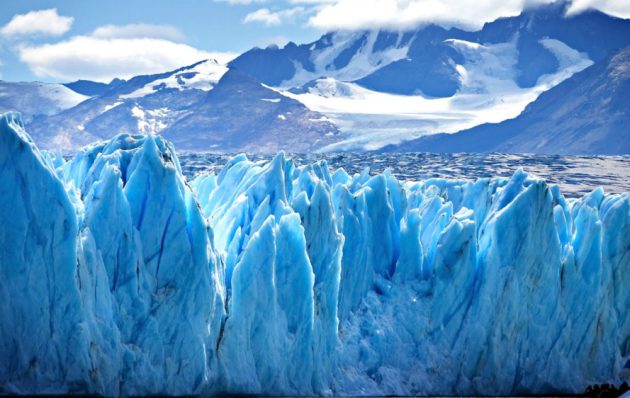
No comments:
Post a Comment